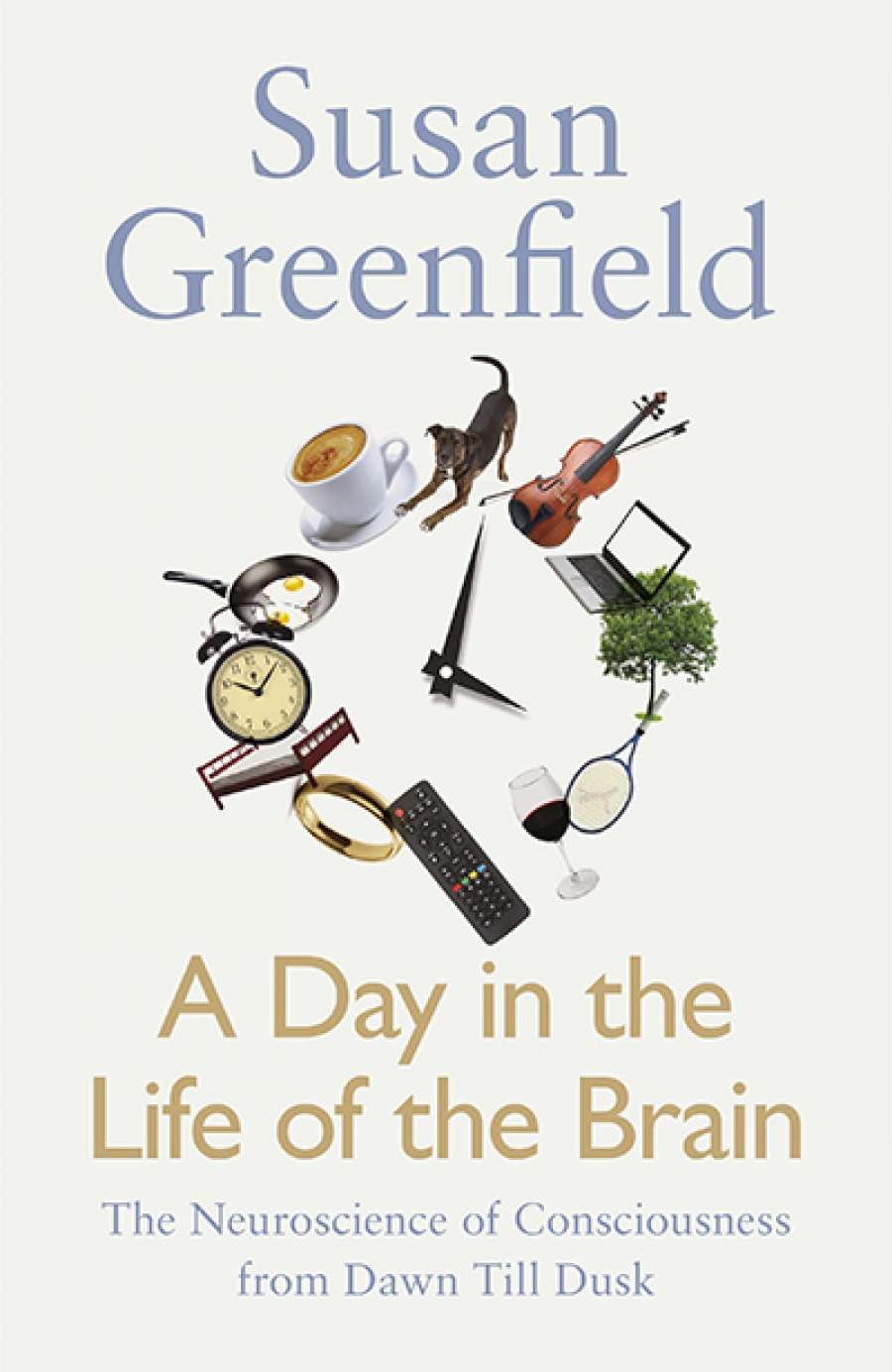
- Free Article: No
- Contents Category: Science and Technology
- Custom Article Title: Nick Haslam reviews 'A Day in the Life of the Brain: The neuroscience of consciousness from dawn till dusk' by Susan Greenfield
- Review Article: Yes
- Online Only: No
- Book 1 Title: A Day in the Life of the Brain
- Book 1 Subtitle: The neuroscience of consciousness from dawn till dusk
- Book 1 Biblio: Allen Lane $24.99, 274 pp, 9780141985046
A Day in the Life of the Brain is the latest work of Susan Greenfield, an eminent science communicator. It is a change of direction from her previous book, Mind Change (2014), which prosecuted a case against the growing role of digital technology in daily life. Our reliance on mobile devices and the internet, Greenfield argued, undermines self and society by making us more narcissistic, disconnected, driven by cheap sensation, and, in extreme cases, autistic. Her new book does not court controversy to the same degree; it turns inward to the mysteries of consciousness rather than outward to cultural critique.
Greenfield is not the first scientist to plumb these depths. Many intellectual giants, including DNA pioneer and Nobel Prize-winner Francis Crick, have tried to explain how consciousness emerges from neural matter. Physicists such as Roger Penrose have also tried their hand, resorting to quantum gravity to account for the emergence of subjective awareness. Greenfield’s approach is more modest. Rather than seeing consciousness as an either-or phenomenon she views it as a continuum, and rather than seeking the key to its emergence she searches for a dynamic brain process that can bridge subjective experience and objective brain structure. Her goal is to discover a neural correlate of consciousness that can be studied experimentally. Dismissing theories that locate the seat of consciousness in particular brain regions or circuits, she argues that it is to be found in ‘neural assemblies’. The short-lived activations of these assemblies vary in ways that underpin variations in conscious experience.
How that experience arises from the neural assemblies is explained using a somewhat overworked metaphor. The propagation of electrical impulses through assemblies is likened to ripples in a puddle set in motion by a tossed stone. In this metaphor, an instigating event such as a noise triggers a hub of neural activity, generating ripples whose size depends on features of the event and the puddle. Confusingly, the noise is the throw itself rather than the stone, which is the neural hub. Stronger throws and puddles made less viscous by modulatory neurochemicals produce greater ripples, which are experienced as more intense consciousness. Such a link between the magnitude of neural propagation and consciousness is plausible, but Greenfield’s account has yet to gain much traction among neuroscientists. Their reticence is due to the rather scant experimental evidence for the critical role of neural assemblies in consciousness, and to the belief that it depends less on the activation of single assemblies than on the reverberation of activations between different brain regions.
However compelling this account of consciousness may be, Greenfield applies it revealingly to many everyday activities and predicaments. Chapters are strung in a line that follows the trajectory of a day, starting with waking from sleep, moving through walking the dog, eating breakfast, going to work, and ultimately heading back to sleep and dreaming. This time-line does not readily accommodate all of the topics Greenfield wishes to cover, so the reader is treated to explorations of colour and taste perception, music, creativity, depression, dementia, pain, and the challenges of open-plan offices along the way.
The treatment of these subjects is generally illuminating and well supported by extensive notes and references. A few questionable claims appear, as might be expected given the range of Greenfield’s conceptual ambition. Late in the book, while allocating a diverse collection of mental states to greater or lesser degrees of consciousness, some of her choices hark back to the controversies surrounding Mind Change. Classical music, jogging, and abstract thought entail greater consciousness, rave music and fast-paced sports entail lesser. Children, animals, and people with schizophrenia all have attenuated consciousness: their ripples are smaller.
Greenfield maintains a rapid pace throughout this very readable book. Her avidity as a scientist and thinker is obvious, and even a sceptical reader will be drawn along by her skills as a writer. The neuroscience itself is perhaps secondary to the enterprise of providing an accessible metaphor for how consciousness comes about. The technical details of the science will be beyond most readers, but although they lend authority to the text they are not essential to the story. Fundamentally, the book’s mission is to bring consciousness down from the realm of airy abstractions and into the mundane reality of everyday lives and brains.


Comments powered by CComment